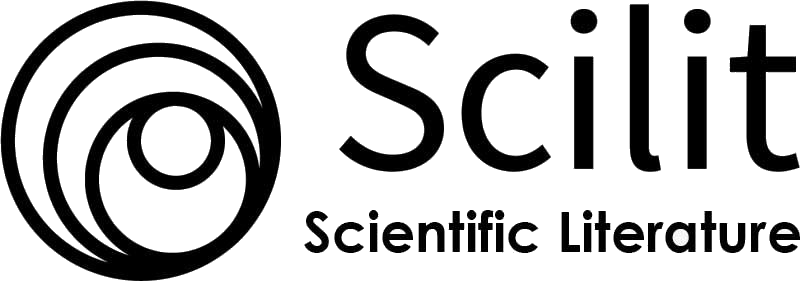Punitive Practices: Accentuating Violent Behavior Towards Classmates In High Schools In Cameroon
DOI:
https://doi.org/10.58425/ijpce.v4i2.374Keywords:
Punitive practices, violent behavior, classmates, school violence, social learning theoryAbstract
Aim: This study aims to examine the relationship between punitive disciplinary practices and the recurrence of violent behavior among high school students in Cameroon.
Methods: This research is based on the observation that the media and social networks regularly relay information about violence perpetrated by learners in schools. And yet, from an early age, adults have used punishment to discipline them and make them docile. So, how can we understand that a secondary school learner is capable of violence? Bandura’s theory of social learning allows us to understand that learners are capable of imitating adults’ reactions and reproducing them in situations they deem appropriate. Using a qualitative design, the study employed purposive sampling to select 10 high school students. Data were collected through semi-structured interviews and analyzed using thematic content analysis.
Results: The results show that the most visible form of physical violence is punishment-expiation, which aims to inflict pain on the body of the person being punished. It is therefore favored by learners who want to defend themselves from the attacks of classmates or certain rogue school officials. Punishment-banning and punishment-signing are those that induce psychological violence.
Conclusion: The study concludes that punitive disciplinary practices in schools may reinforce violent behavior through modeling, as explained by Bandura’s social learning theory.
Recommendation: The study recommends that educational supervisors and teachers adopt non-punitive, restorative approaches to discipline and receive training in conflict resolution and psychosocial support.
References
Bar, P., (2011). Punishment at school. Bruxelles: UFAPEC.
Beaumont C., Lavoie J., Couture C., (2010). Les pratiques collaboratives en milieu scolaire : cadre de référence pour soutenir la formation. Québec : Centre de recherche et d’intervention sur la réussite scolaire, Université Laval.
Bernier V., (2024). Les pratiques punitives, la suspension scolaire et leurs alternatives. Département de didactique UQAM
Bowen F. et Levasseur C., Beaumont C., Morissette E., St-Arnaud P., (2018). Élaboration d’un instrument évaluant la mobilisation des milieux scolaires québécois à l’égard de l’implantation de mesures pour prévenir la violence. Communication présentée dans le cadre du 7e Congrès biennal du Conseil Québécois pour les Jeunes en Difficulté de comportement.
Boudreault, A., Lessard, J. et Guay, F., (2019). Regard transactionnel sur l’effet des stratégies punitives mobilisées par l’enseignant auprès des élèves présentant des problèmes de comportements extériorisés. La nouvelle revue - Éducation et société inclusives, 86(2), 187-206.
Charles C.M., La discipline en classe. Modèles, doctrines et conduites, Montreal, 1997, pp. 27-28. 7 Isabelle Filliozat in "Qu’est-ce qu’une bonne punition?", Psychologies Magazine, January 2011, p. 114.
Cohen, D. R., Lewis, C., Eddy, C. L., Henry, L., Hodgson, C., L. Huang, F., Reinke, W. M. et Herman, K. C., (2023). In-School and Out-of-School Suspension: Behavioral and Psychological Outcomes in a Predominately Black Sample of Middle School Students. School Psychology Review, 52(1), 1-14. https://doi.org/10.1080/2372966X.2020.1856628
Collectif (2004). De l’apprentissage social au sentiment d’efficacité personnelle. Autour de l’œuvre d’Albert Bandura, l’HARMATTAN, 175.
Defrance B., (2003). Sanctions et discipline à l’école. Paris : La Découverte. Desbiens, J-F. (2000). Sévir devant l’inconduite des élèves : la punition sous examen. In D. Jeffrey & C. Simard (Eds.), Enseigner et punir (pp.59-74). Canada : La Presse de l’Université Laval.
Institut National de Santé Publique du Québec (INSPQ). 2018. Quebec report on violence and health. http://www.inspq.qc.ca
Lichtle, J., (2013). Punishments at school: how effective and what consequences? Dans vos têtes Online http://blog.francetvinfo.fr/dans-vos-tetes/2013/06/06/les-punitions-a-lecole-quelleefficacite-et-quelles-consequences.html.
World Health Organization, (2002). World report on violence and health. https://www.who.int/violence_injury_prevention/violence/world_report/en/full_fr.pdf
FEUZEU F. Les Violences En Milieu Scolaire Au Cameroun Regard Croisé Sur Un Fléau Aux Conséquences Dramatiques dans International Multilingual Journal of Science and Technology (IMJST) ISSN: 2528-9810 Vol. 5 Issue 12, December – 2020
Filliozat I., (2011). « Qu’est-ce qu’une bonne punition ? », Psychologies Magazine, janvier 2011, p. 114.
Galand B., Carra C., Verhoeven M., (2012). Prévenir les violences à l’école. Paris: Presses Universitaires de France, 2012.
Gottfredson D. C., (2001). Schools and Delinquency, Cambridge, University Press.
Gaudreau, N., Verret, C., Massé, L., Nadeau, M.-F., & Picher, M.-J., (2018). La scolarisation des élèves présentant des difficultés comportementales : analyse écologique des conditions relatives à leur intégration au secondaire. Canadian Journal of Education Revue Canadienne De l’éducation, 41(2), 554–583. Retrieved from https://journals.sfu.ca/cje/index.php/cje-rce/article/view/3236
Jean-Pierre, J. et Parris-Drummond, S., (2018). Alternative School Discipline Principles and Interventions : An Overview of the Literature. McGill Journal of Education, 53(3), 414-433. https://doi.org/10.7202/1058410ar
Noltemeyer, A. L., Ward, R. M., & Mcloughlin, C., (2015). Relationship between school suspension and student outcomes: A meta-analysis. School Psychology Review, 44(2), 224–240. https://doi.org/10.17105/spr-14-0008.1
Payne, R., (2015). Using rewards and sanctions in the classroom: Pupils’ perceptions of their own responses to current behaviour management strategies. Educational Review, 67(4), 483-504.
Prairat, E., (2002). Questions de discipline à l’école... et ailleurs. Ramonville SaintAgne: Erès.
Prairat, E., (2001). La sanction en éducation. Idées, résultats et problèmes, Paris, Presses universitaires de FrancePrairat,E.(2011) Réflexion sur la sanction en éducation paru dans « La revue de l’enfance et de l’adolescence » no57.
Prairat, E., (1997). La sanction- petites médiations é l’usage des éducateurs. Paris: L’Harmattan. Prairat, E. (2003). La sanction en éducation. Paris: Presses Universitaires de France.
Trotman, D., Tucker, S. et Martyn, M., (2015). Understanding problematic pupil behaviour: Perceptions of pupils and behaviour coordinators on secondary school exclusion in an English city. Educational Research, 57(3), 237-253. http://doi.org/10.1080/00131881.2015.1056643
Welsh, R. O., (2023). Up the down escalator? Examining a decade of school discipline reforms. Children and Youth Services Review, 150, 106962. https://doi.org/https://doi.org/10.1016/j.childyouth.2023.106962
Downloads
Published
How to Cite
Issue
Section
License
Copyright (c) 2025 Douanla Djala Adeline Maelyne

This work is licensed under a Creative Commons Attribution 4.0 International License.
The authors retain the copyright and grant this journal right of first publication. This license allows other people to freely share and adapt the work but must give appropriate credit, provide a link to the license, and indicate if changes were made. They may do so in any reasonable manner, but not in any way that suggests the licensor endorses them or their use.










